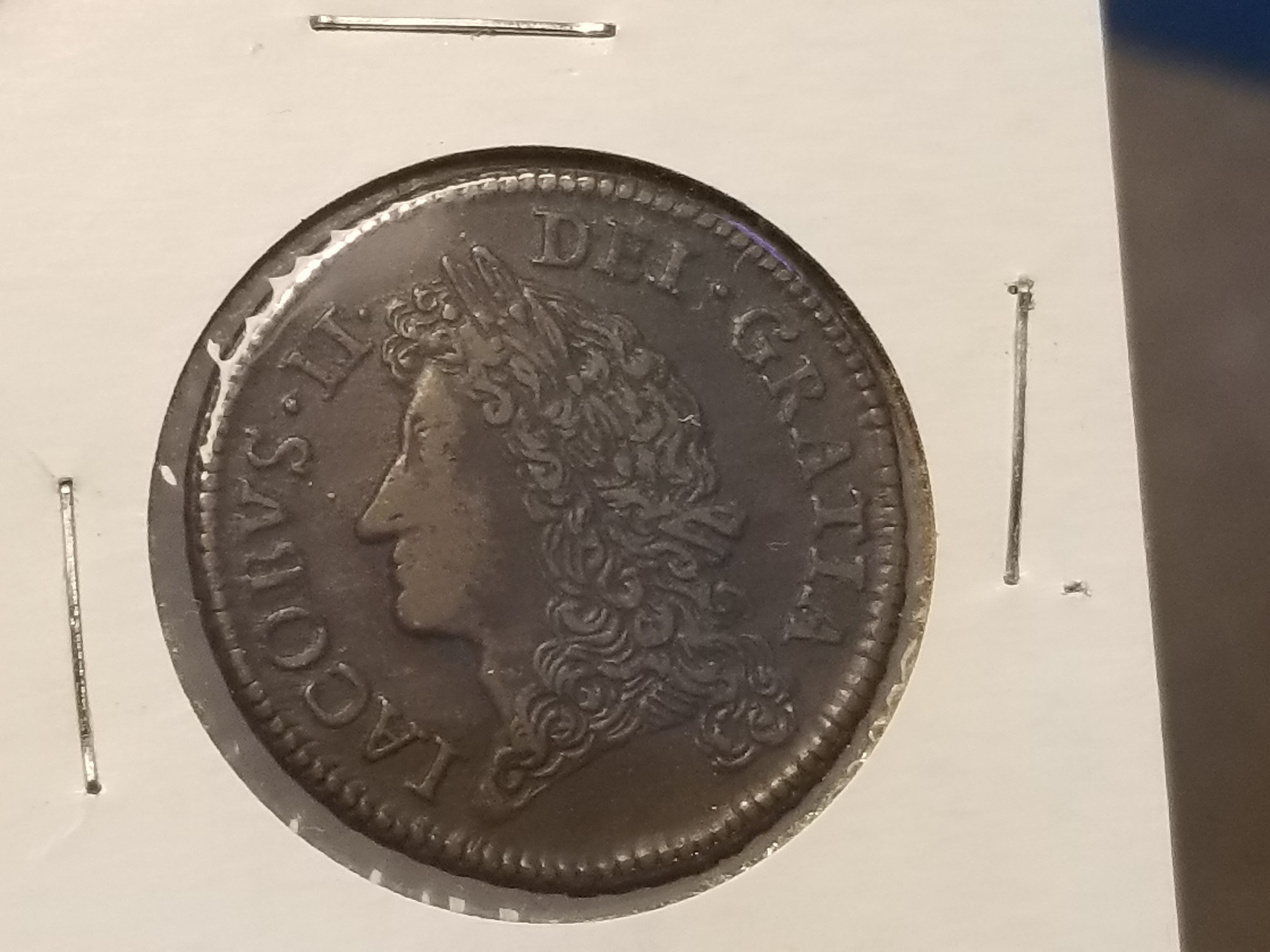Options
Question about verdigris on old coppper
I just got back into collecting and was recently looking through all of my coins with a loupe. I was alarmed to find out there is a small amount of verdigris that has started growing on my 1690 "Gun Money" Half Crown. Without using the loupe, you can't tell that it is there unless you know where to look (it is very small).
Is there a way to remove this without harming the coin? Should I just keep it as-is since it is small and doesn't really detract from the eye appeal of the coin?


0
Comments
How about you soak the coin in distilled water for a few days to see if you can neutralize surface contaminants. Read up on what verdigris is and what that means. Peace Roy
BST: endeavor1967, synchr, kliao, Outhaul, Donttellthewife, U1Chicago, ajaan, mCarney1173, SurfinHi, MWallace, Sandman70gt, mustanggt, Pittstate03, Lazybones, Walkerguy21D, coinandcurrency242 , thebigeng, Collectorcoins, JimTyler, USMarine6, Elkevvo, Coll3ctor, Yorkshireman, CUKevin, ranshdow, CoinHunter4, bennybravo, Centsearcher, braddick, Windycity, ZoidMeister, mirabela, JJM, RichURich, Bullsitter, jmski52, LukeMarshall, coinsarefun, MichaelDixon, NickPatton, ProfLiz, Twobitcollector,Jesbroken oih82w8, DCW
If it is the soft oily verdigris, then acetone will take it right off with a couple short dips, then rinsing with distilled water. It won't hurt circulated copper, bronze or silver at all .. DON'T use a brush; just soft dabs with a soft cotton cloth. If it's the hard green powdery/flaky stuff, then regardless whether you get the green off or not, you will have a spot/mark there where it starts to corrode the metal.
I will consider this. I can't imagine it hurting the coin. I have read online where people recommend baking soda, soda ash and distilled water, but I was not sure if that could cause any adverse affects on circulated copper.
From my quick search, it looks like acetone is usually used for treating PVC. I have never been able to tell the difference between PVC and verdigris. My coin was in a plastic flip for the last 10 years (I only recently moved it to mylar) and I have heard those flips can cause PVC issues. My main concern would be whether acetone could have any negative affect on the coin. Based on your response, it sounds like it will not.
Pure acetone is an organic solvent that evaporates completely. It is flammable so ventilate and no plastic containers, lids or utensils. Peace Roy
BST: endeavor1967, synchr, kliao, Outhaul, Donttellthewife, U1Chicago, ajaan, mCarney1173, SurfinHi, MWallace, Sandman70gt, mustanggt, Pittstate03, Lazybones, Walkerguy21D, coinandcurrency242 , thebigeng, Collectorcoins, JimTyler, USMarine6, Elkevvo, Coll3ctor, Yorkshireman, CUKevin, ranshdow, CoinHunter4, bennybravo, Centsearcher, braddick, Windycity, ZoidMeister, mirabela, JJM, RichURich, Bullsitter, jmski52, LukeMarshall, coinsarefun, MichaelDixon, NickPatton, ProfLiz, Twobitcollector,Jesbroken oih82w8, DCW
The soft oily vergiris is USUALLY caused by PVC, as it interacts with the copper, but it can be there from other contaminants as well. The lighter green hard, flaky, powdery stuff usually leaves behind pitting or discoloration even if you get the green off. Acetone, as I said, works well, but breathe the stuff in much .. ventilate. Although fingernail polish remover is mostly acetone, it many times has other ingredients. Just go to the hardware store and get a pint or quart .. it has many uses, is cheaper, and lasts a long time.